Growing leafy vegetables indoors under lights is a great way to enjoy fresh greens in the depths of winter. They’re good for you!
Growing greens indoors can be good for those long, dark days of winter. Whether you’re a seasoned gardener or a beginner, growing greens is a good way to start learning about indoor gardening.
This handy guide will walk you through everything you need to know to successfully grow lettuce, spinach, kale, and other leafy greens indoors.
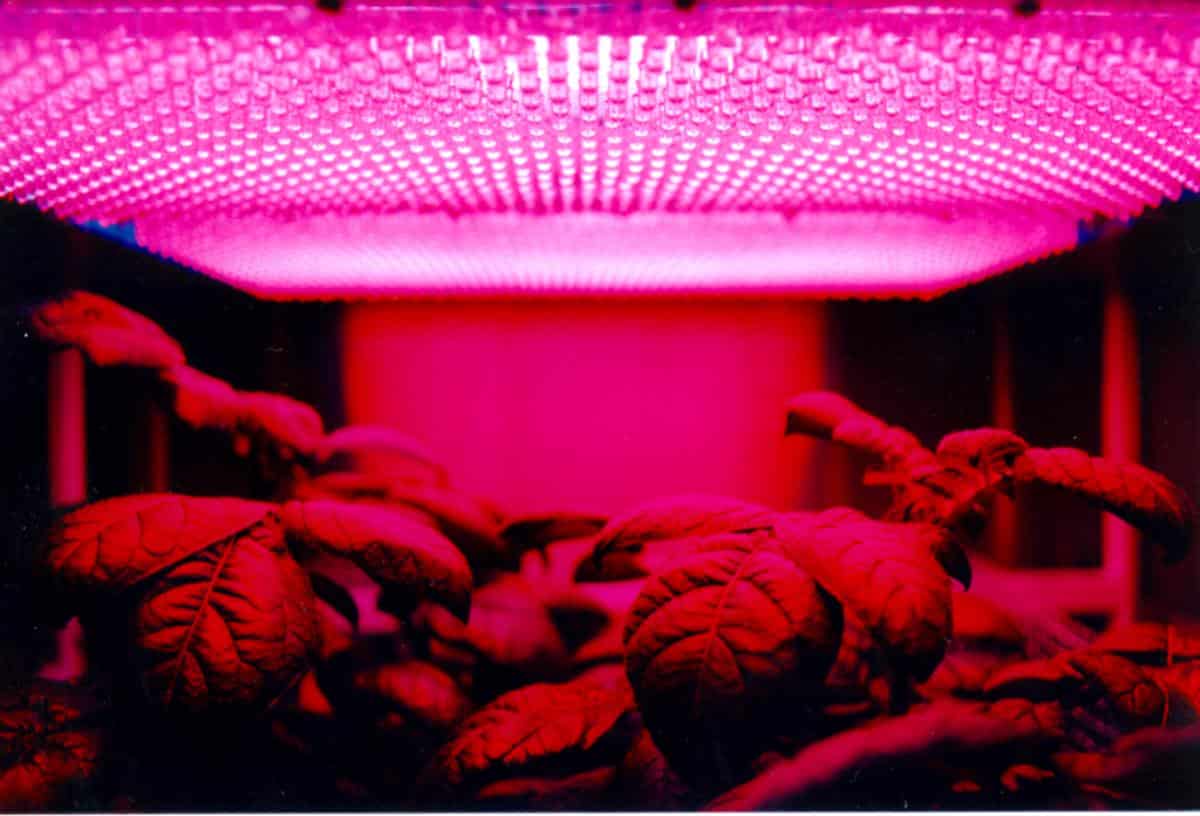
Jump to:
- Why Grow Leafy Vegetables Indoors?
- Best Leafy Vegetables to Grow Indoors
- Essential Requirements for Growing Leafy Vegetables Indoors
- Growing Lettuce Indoors
- Growing Spinach Indoors
- Baby Greens
- Cut and Come Again Plants
- Regrow Leafy Vegetables from Leftovers
- Growing Cabbage Indoors
- Microgreens
- Tips for Success
- Common Mistakes to Avoid
- Final Thoughts
Why Grow Leafy Vegetables Indoors?
It’s kind of hard to grow lettuce outdoors when there’s 52 feet of snow on the ground – and even when there’s not. I don’t want to go outside when it’s cold. I’d rather grow stuff in places where I can stand in front of a heater. So, I’m a wimp.
Indoor gardening offers several other benefits.
- Year-round harvests: No need to wait for the growing season in spring. Indoors, spring can start right now.
- Space efficiency: Indoor gardening is great for small apartments or homes with no outdoor space.
- Control growing conditions: Weather can’t throw you curveballs indoors. You can manage light, temperature, and water to suit your plants.
- Cost savings: The cost of food keeps going up and up – so grow your own.
- Sustainability: Reduce food waste by growing only what you need.
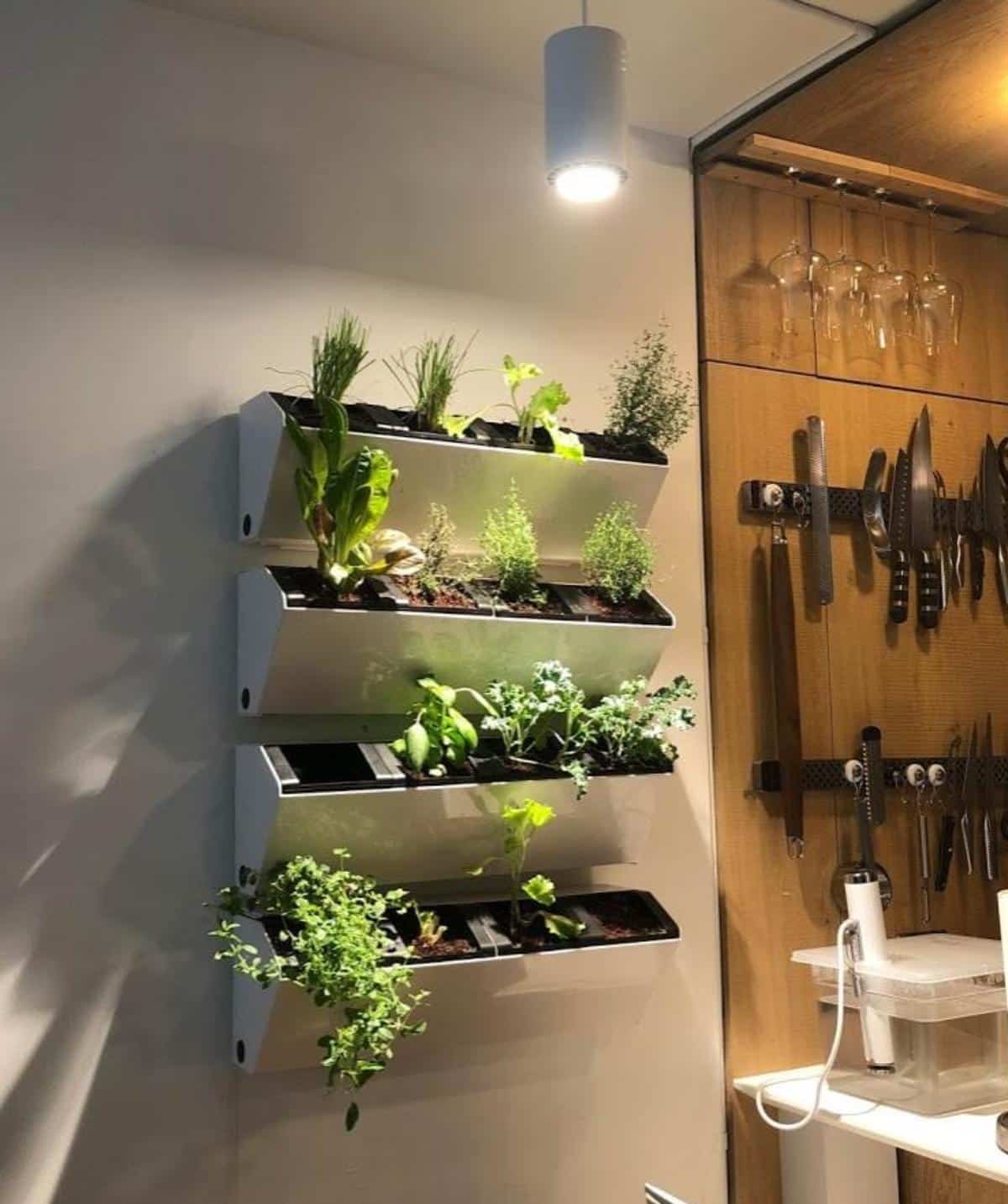
Learn more about Indoor Gardening.
Best Leafy Vegetables to Grow Indoors
Some of the easiest and most rewarding leafy vegetables to grow indoors include:
- Lettuce (looseleaf varieties like Buttercrunch, Romaine, and Red Sails are best)
- Spinach (Renegade and Butterfly are great indoor varieties)
- Kale (Dwarf Blue Curled and Red Russian)
- Swiss Chard (Bright Lights and Fordhook Giant)
- Arugula (Rocket and Astro)
- Microgreens (quick-growing and nutrient-dense)
- Beet Greens (Beetroots don’t grow well under lights, but beet greens do great.)
If you really want to shake up your indoor garden, choose your leafy green varieties from heirloom seed catalogs. There is an incredible array of curious and beautiful old heirloom vegetables from these catalogs in surprising shades and colors.
Thank you for choosing your leafy green vegetables; keep in mind that the best way to enjoy your garden is to choose what you enjoy eating. If this is the first time you're creating an indoor garden, then focus on crops you already enjoy. It's easy to get all excited and get a little crazy when you're perusing a seed catalog with lots of pretty pictures ... Ask me how I know, the gardening blogger added ruefully.
Essential Requirements for Growing Leafy Vegetables Indoors
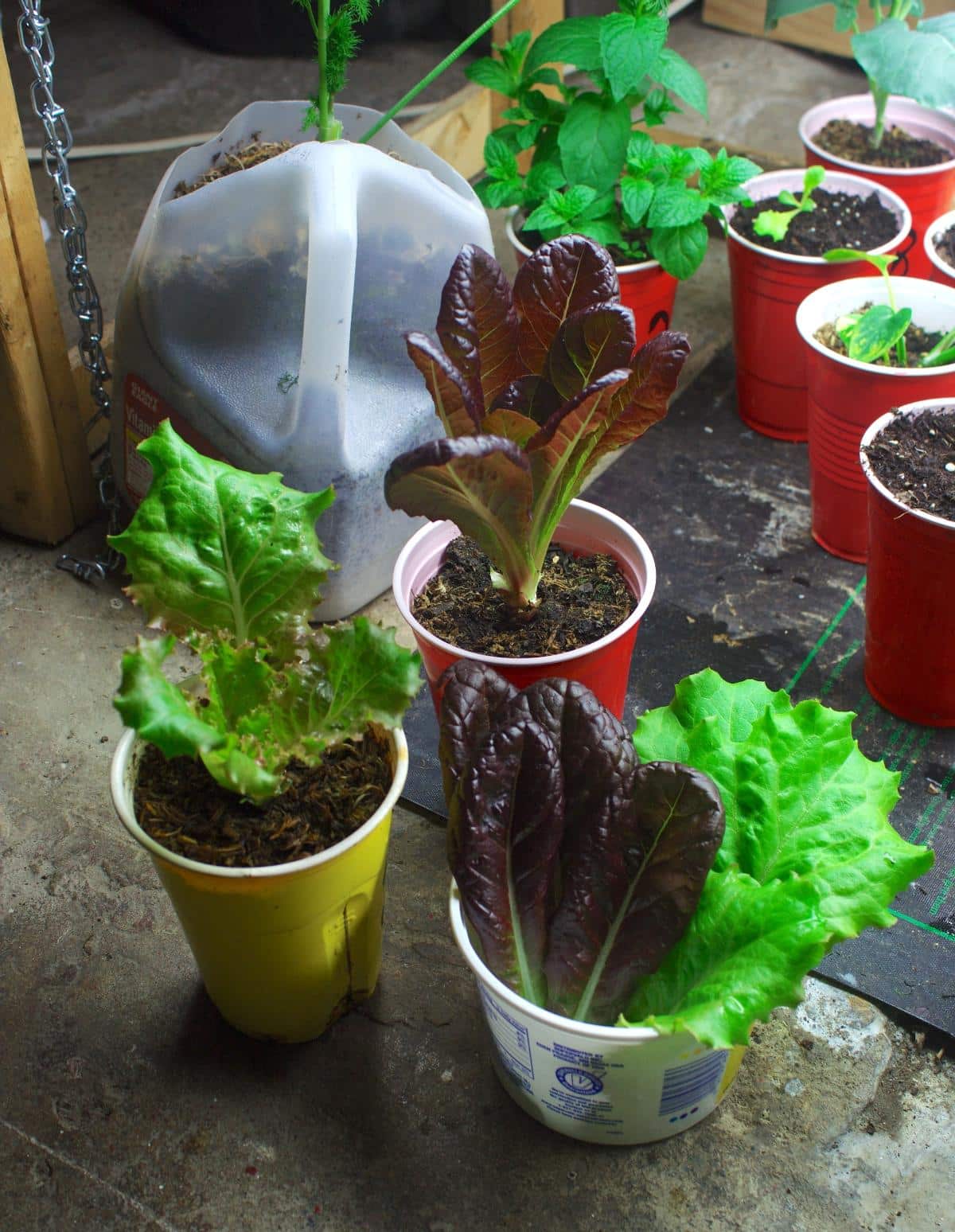
1. Bright Light
Leafy greens thrive with 12–14 hours of bright light daily. Natural sunlight from a south-facing window can work well, if the light is not blocked by trees or roof overhangs. However, even with good light from outdoors, most indoor gardeners rely on supplemental lighting for consistent growth.
Recommended lights:
- LED grow lights: They’re energy-efficient, stay cool, and can provide full-spectrum light. Foliage plants (seedlings, lettuce, leaf crops, herbs, and root crops) do best with lights that approximate natural sunshine as much as possible.
- Fluorescent lights: Use cool white or full-spectrum bulbs placed 6–12 inches above plants. These also stay cool and are fairly energy-efficient. Many fluorescents produce light only in the blue-to-yellow-green spectrum. The blue lights will produce stocky lettuce, greens, and seedlings that stay compact.
- Panel lights: Great for larger setups.
Tip: Use a timer to ensure your plants get consistent light daily.
Learn more about Indoor Gardening.
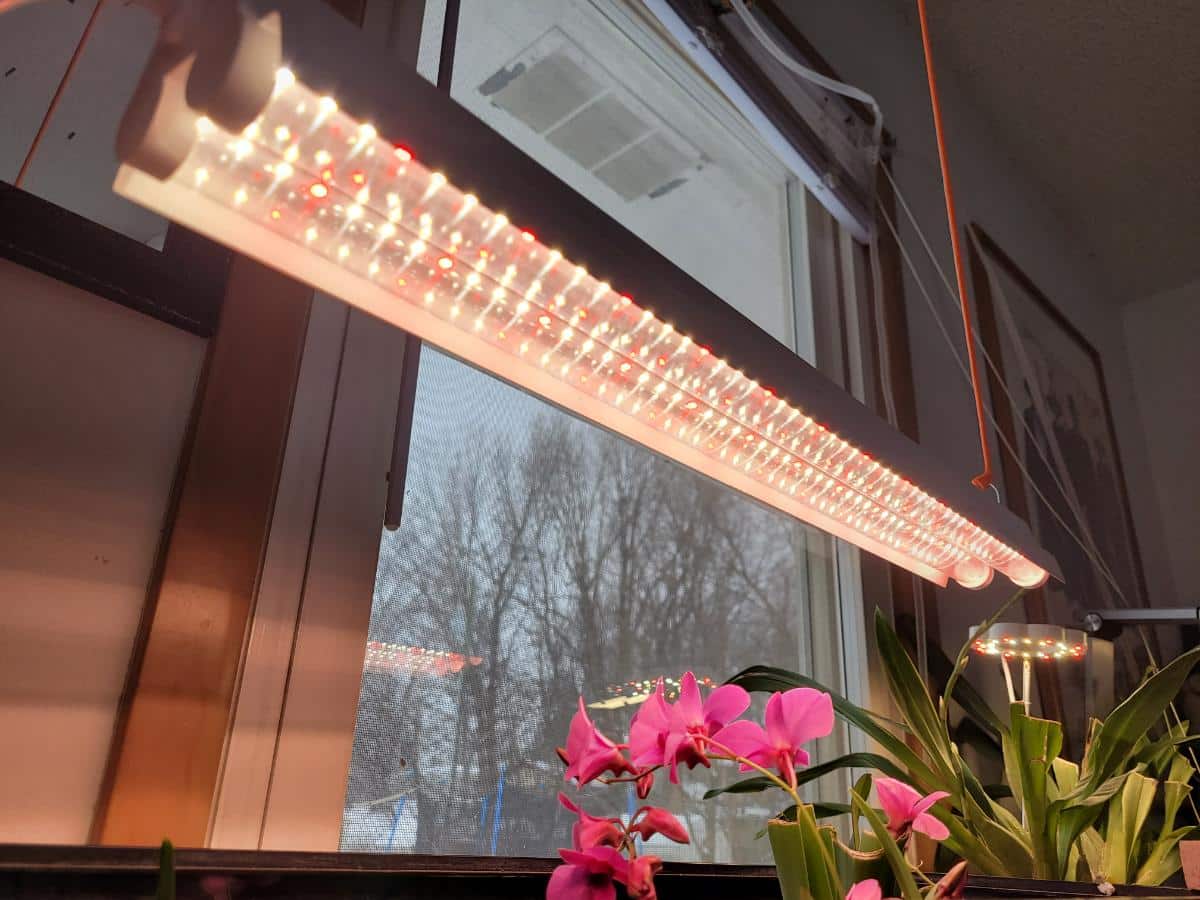
2. Containers and Soil
As shown in the photo above, you don’t need fancy containers if you don’t have the funds. Plants will grow in anything, just as long as the soil and light meet their needs. If you want to use a planting tray, an old flower pot you've got from your grandma or a Ming vase, go for it. (Actually, do not use the Ming vase, good heavens.) Put your plants in a red solo cup, a 2-liter bottle, or a milk jug with the top cut off. Just be sure to punch holes in the bottom and make sure that this water will drain out when there is soil in it.
Soil: Use growing media, which is basically a high quality potting mix that drains well. Do not use soil straight out of your garden, because it will become compact and leave no air gaps for the roots to grow in. Also, sometimes it contains pests.
3. Temperature and Humidity
Ideal temperature: 55–65°F (10–15°C). Leafy greens prefer cooler conditions.
Humidity: Moderate humidity (40–60%) is ideal. Use a humidity tray under the plants or mist plants if the air is too dry.
4. Watering
Keep the soil moist but not soggy. Overwatering will lead to root rot and other troubles. Water at the base of the plants to avoid wetting the leaves, which can encourage mold, especially on the thin-leaved lettuce plants.
5. Fertilizer
Use a balanced granular fertilizer (10-20-20) for steady growth.
Supplement with an organic nitrogen source like fish emulsion for lush, green leaves.
Avoid overfertilizing, as this can lead to bitter-tasting greens.
Learn more:
- 12 Best Mini Fruit Trees to Grow Indoors
- How to Grow Microgreens from Leftover Garden Seeds
- 12 Best Mini Fruit Trees to Grow Indoors
- Micro Gardening Guide – Everything You Need to Know
Growing Lettuce Indoors
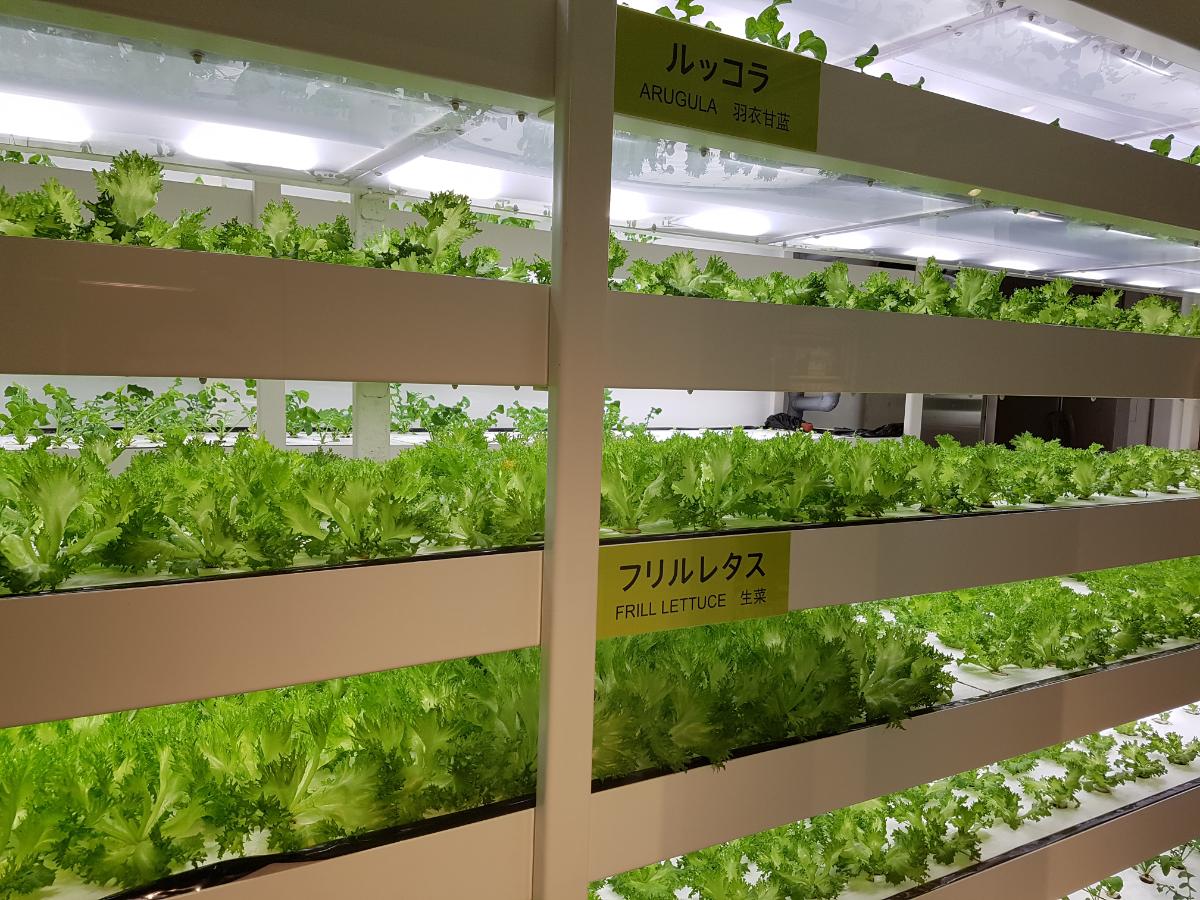
If you’re trying to save space, loose-leaf greens will take up less space than head lettuce. However, there are some adorable small-head lettuces that will fit the confines of your pots.
Lettuce needs about 12 to 14 hours of bright light daily. A south-facing window is great if the light is not blocked by trees or roof overhangs. Even with a south window, you’ll need supplemental lighting. Some panel lights would work, or two 40-watt cool white fluorescent lights that are 6 to 12 inches over the lettuce.
The best types of lettuce to grow inside are loose-leaf lettuces, because they take less space than head lettuce. However, there are some adorable small-head lettuces that will fit the confines of your pots.
Sow lettuce seeds ¼ inch deep in a tray or container with drainage holes. If the room is cold, keep the soil warm with a heat lamp. Thin them out as they grow, or let them grow to 3 inches tall and start selectively harvesting little lettuces for your salads, giving the remaining lettuces more and more room. Do your best not to disturb the roots of the remaining lettuce!
If the plants flop over, pile a little soil around their bases to stabilize them.
Lettuce can be harvested at 4 weeks or earlier. You can use the “cut and come again” method where you cut the leaves off above the growing parts and let new leaves grow out.
Growing Spinach Indoors
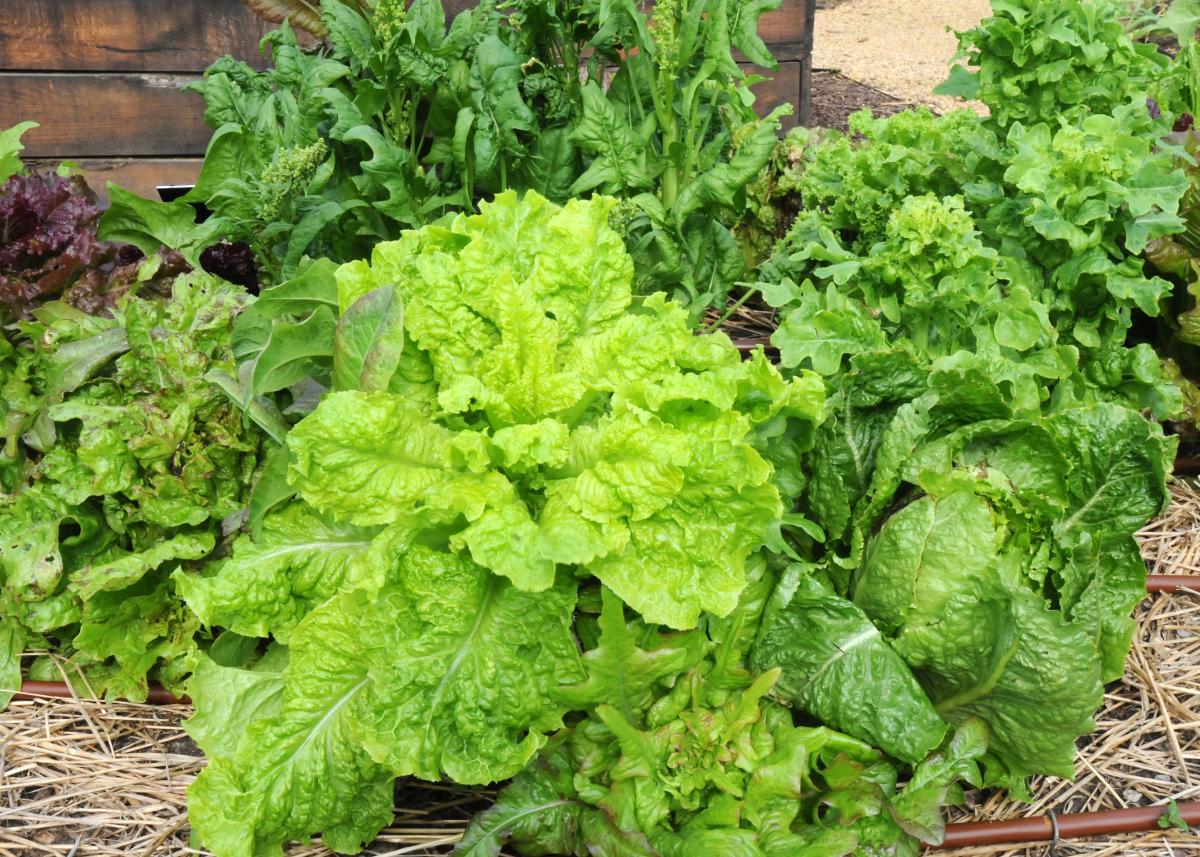
If you’re growing spinach, good indoor varieties include Renegade and Butterfly.
Keep leaf crops on the cool side, 55 to 65 degrees. These are cool-season crops, so when they start getting leggy or send up a flower stalk, the leaves will turn bitter and not very tasty.
Baby Greens
Great choices for baby greens include lettuce, arugula, basil, chard, and spinach.
Plants grown for food instead of aesthetics will need full light, whether from the sun or from supplemental light.
Side note: A flat of lettuce can survive on the kind of light you give to a dracaena, a pothos, or some other low-light houseplant. But the lettuce plant won’t be happy, and it won’t bear the tasty greens that you planted it for. It will be tall and leggy and sad and pale, like ghost lettuce. You don’t want to make a salad that looks like Bunnicula has been raiding the vegetables in your fridge.
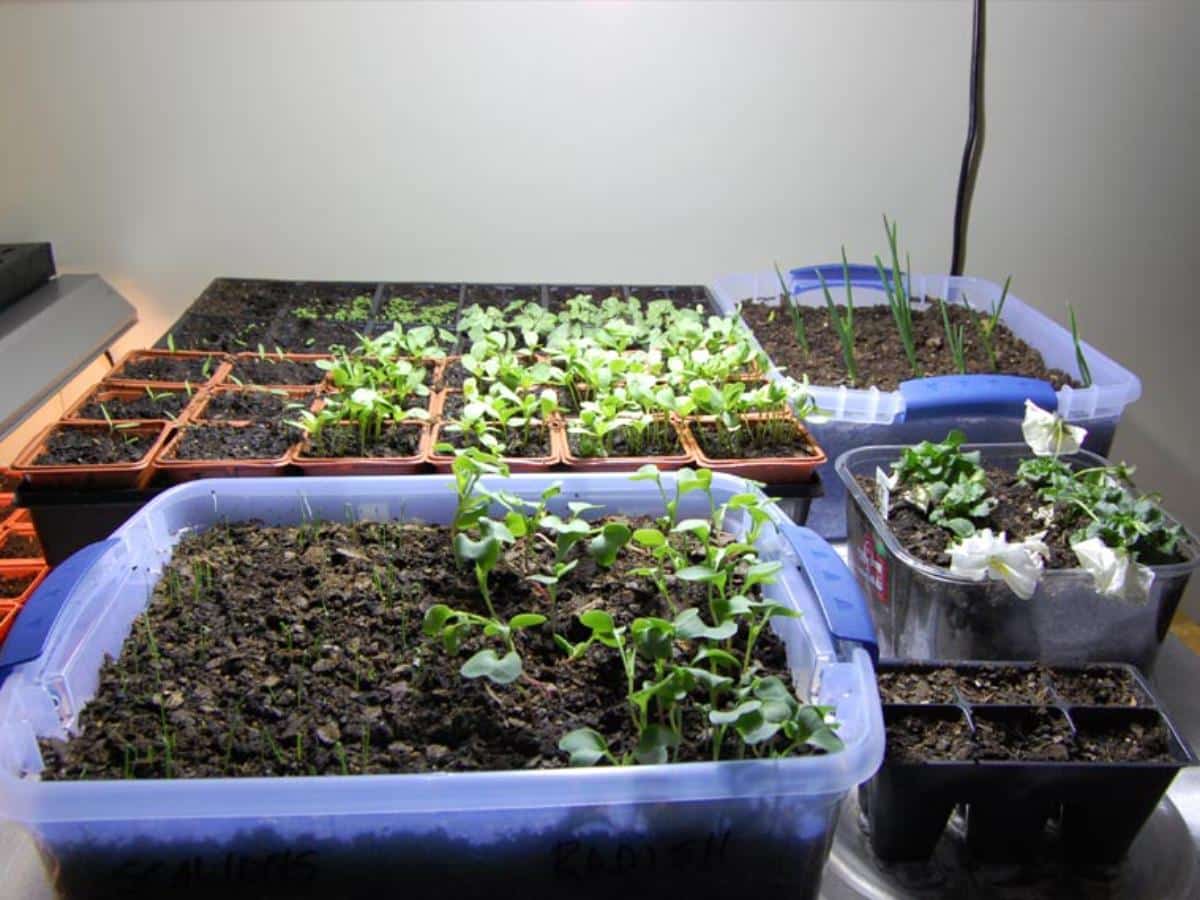
Cut and Come Again Plants
Cut and come-again harvesting is when you clip the parts of the plant you need, then let everything grow back. With this method, you can snip off the leaves every week and then you have another batch ready to go in a week or two. Most lettuces (except head lettuces) are good for this, as well as any greens and herbs.
Harvest the smaller leaves on your lettuce for the best flavor.
Cut and come again won’t be a perpetual source of leaves. After a while, the lettuce will get spindly and blueish, and you can send it to the compost bin.
Regrow Leafy Vegetables from Leftovers
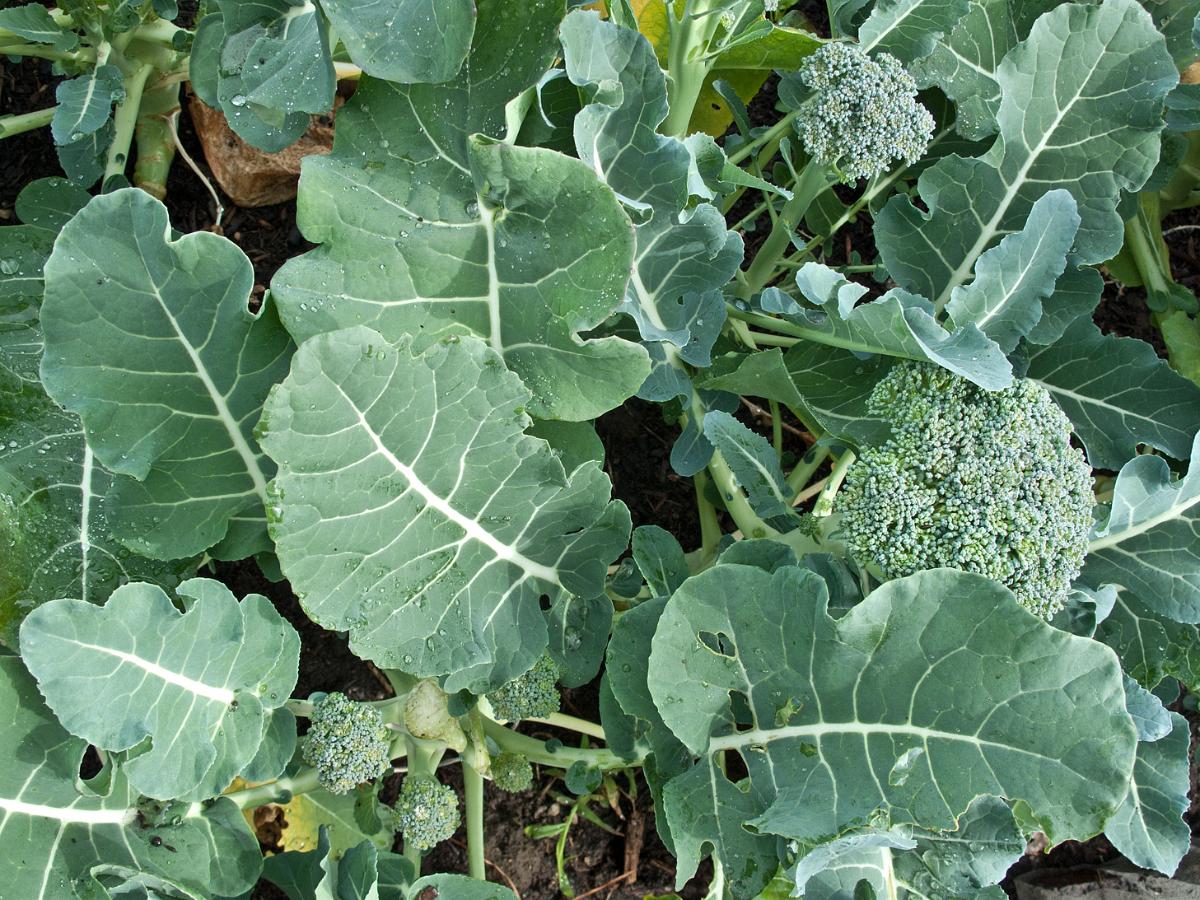
Leafy vegetables such as lettuce, cabbage, celery can be regrown from the bottom of the stalks. Cut off the leaves, leaving an inch or two of the plant’s base. Set the base in a shallow bowl, add enough water to cover the base, and give it full sun. Replace the water every couple of days. Eventually new leaves start growing from the centers, and roots will form.
Once they do, you can replant the base in a pretty little container, covering the roots with soilless potting mix while leaving the tops exposed. Or you can simply let it keep growing in the shallow water. This won’t give you a whole new lettuce head, but you will have leaves to add to salads.
Waste not, want not.
Learn more about Indoor Gardening.
Growing Cabbage Indoors
You can certainly grow large leafy vegetables indoors as well. One of my college buddies from Minnesota grows ginormous heads of cabbage indoors over winter. Start several seeds in a pot, then thin out the small ones until only the largest seedling is left. This is the Chosen One, the one destined to be cabbage. Give it a large pot and bright lighting, and let her grow.
Microgreens
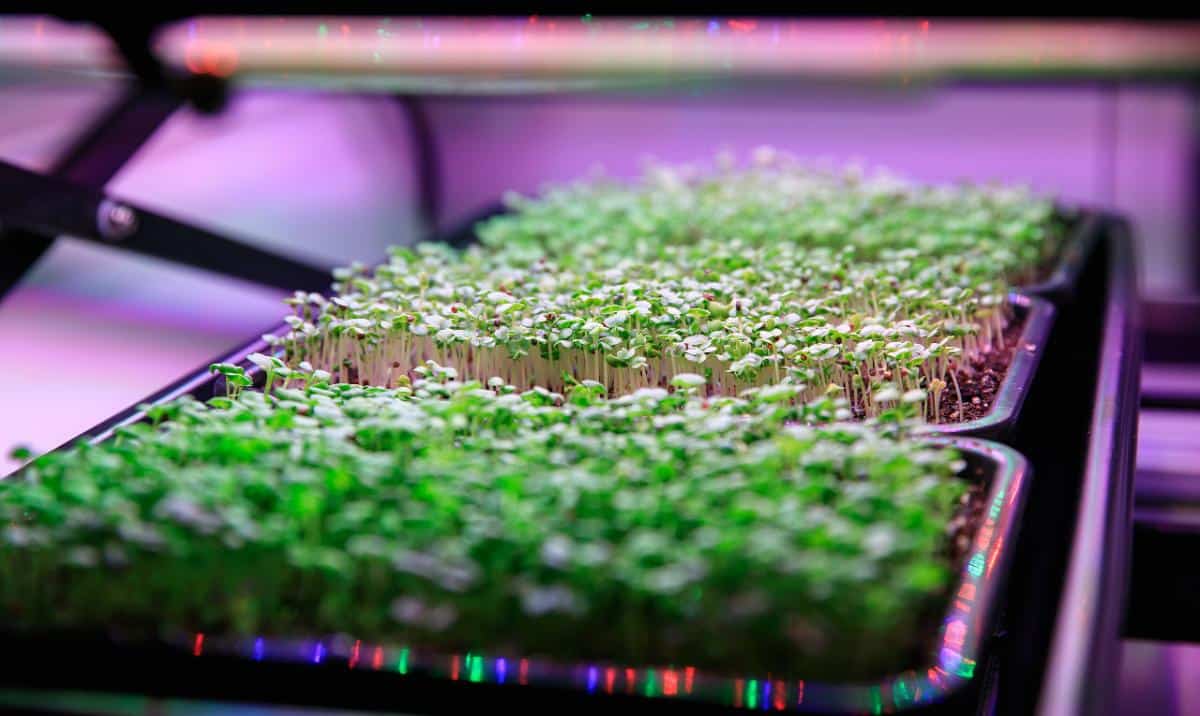
Microgreens will give you more bang for your buck because they’re quick to start and grow, which is super nice. Seeds for lettuce and other greens tend to germinate quickly, and these guys are salad-ready within 10 to 25 days of seeding. Once the microgreens germinate, you have about 7 to 11 days before the true leaves emerge (that’s when you should harvest).
You can use regular garden seeds for microgreens. Since you’ll be eating these seedlings pretty soon after they shed their seed coat, use organic seeds.
Read more about Indoor Gardening.
- Grow Winter Vegetables and Fruits with an Indoor Garden
- Growing Ginger in Containers (Step by Step)
- The Keys to Successfully Growing Herbs Indoors
Tips for Success
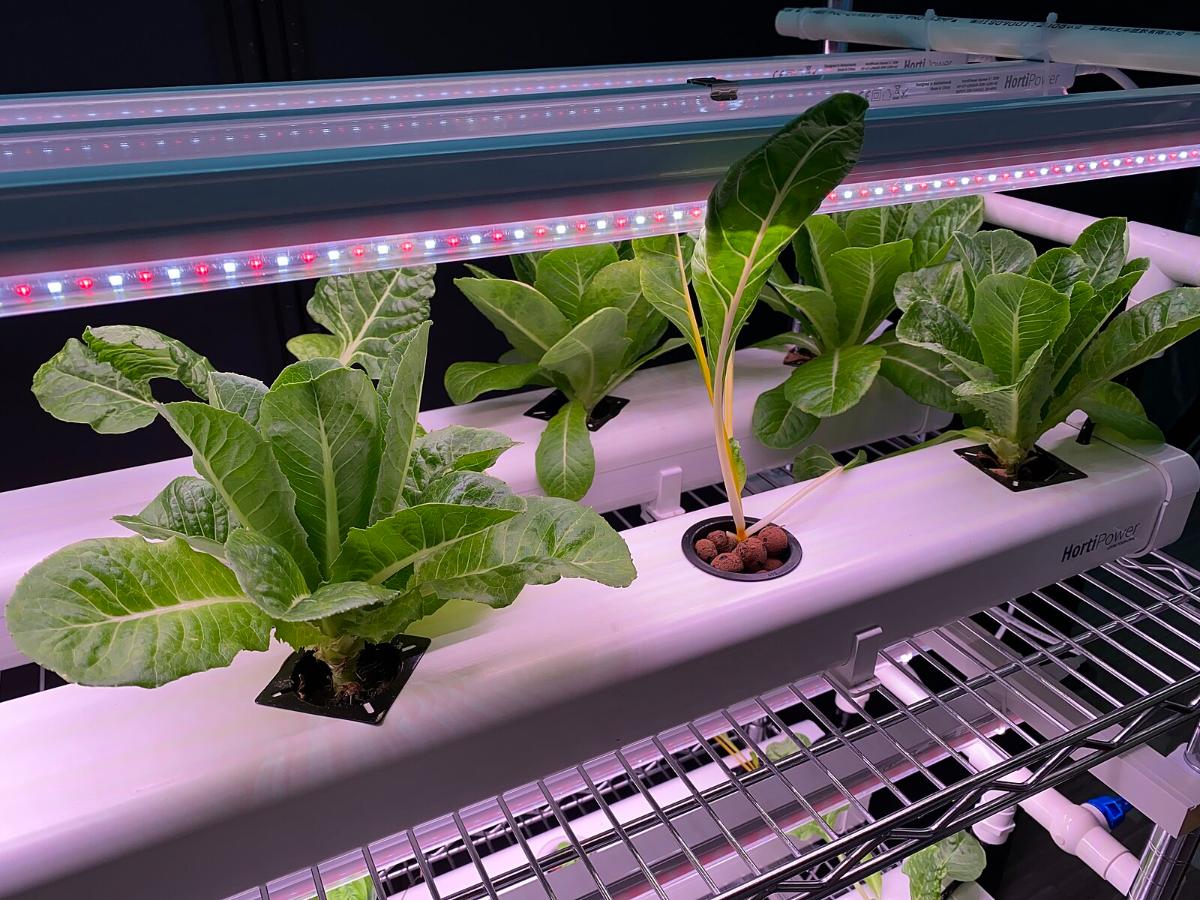
Rotate plants: Ensure even light exposure by rotating containers regularly.
Prevent pests: Keep an eye out for aphids and spider mites. Use insecticidal soap or neem oil if needed.
Reuse kitchen scraps: Regrow lettuce, celery, and bok choy from scraps by placing the base in water until roots form, then transplanting into soil.
Experiment with microgreens: Use leftover garden seeds to grow nutrient-packed microgreens in just 10–25 days.
Read more gardening advice from Rosefiend Cordell.
Common Mistakes to Avoid
- Insufficient light: Leads to leggy, pale plants.
- Overwatering: Causes root rot and mold.
- Ignoring temperature: Leafy greens prefer cooler conditions.
- Crowding plants: Prevents proper airflow and growth.
Final Thoughts

Growing leafy vegetables indoors under lights is a fun, sustainable way to enjoy fresh greens through the winter and any other time of the year. With the right setup and care, you can transform a small corner of your home into a thriving indoor garden. Whether you’re growing lettuce for salads, spinach for smoothies, or microgreens for garnishes, the rewards are well worth the effort.
Start small, experiment with different varieties, and soon you’ll be harvesting your own homegrown greens—no garden required!
Happy gardening! 🌱

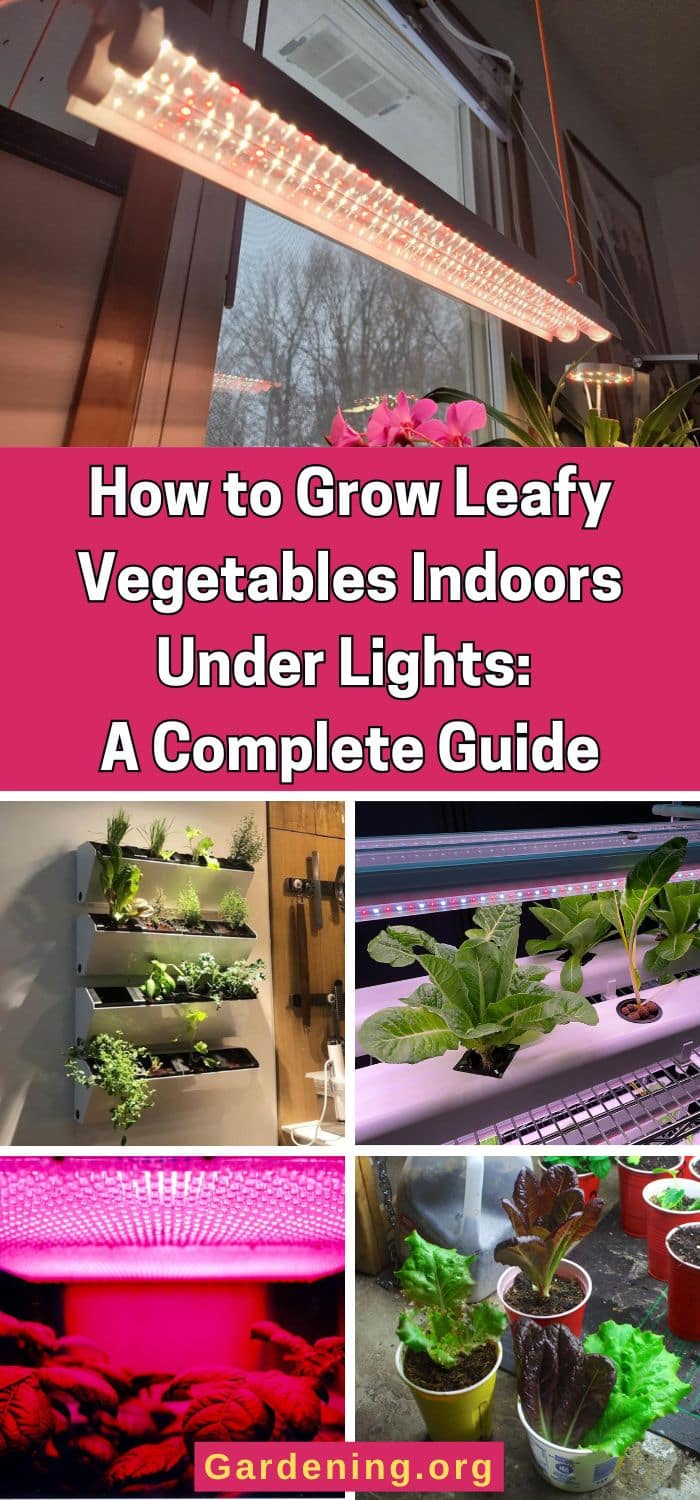
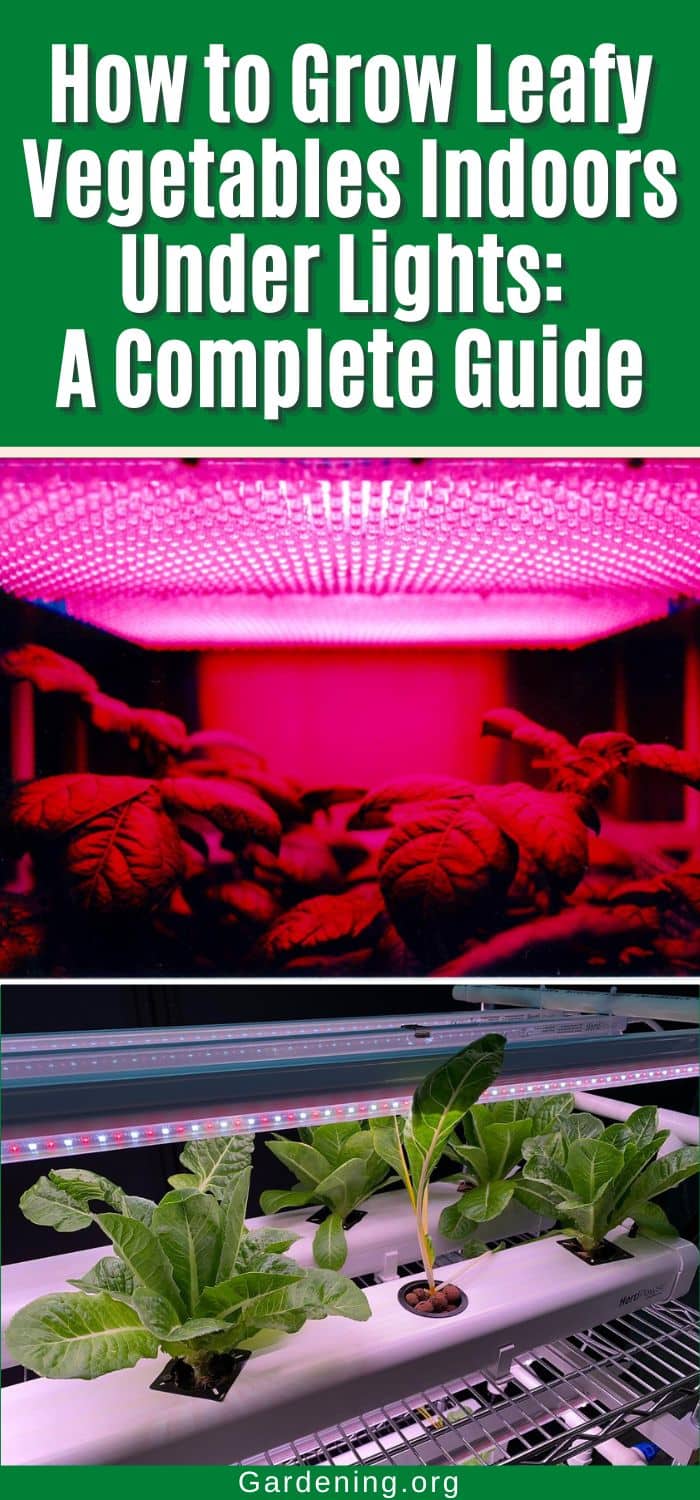
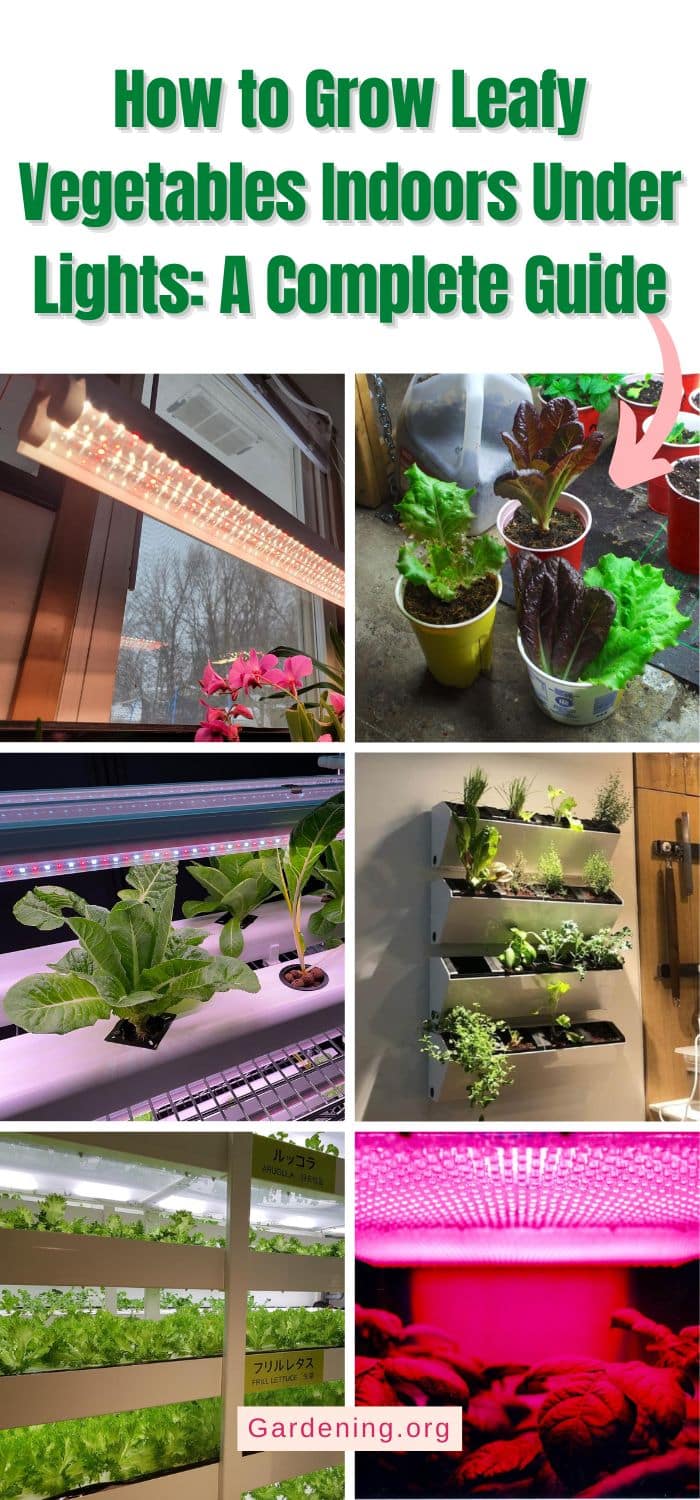
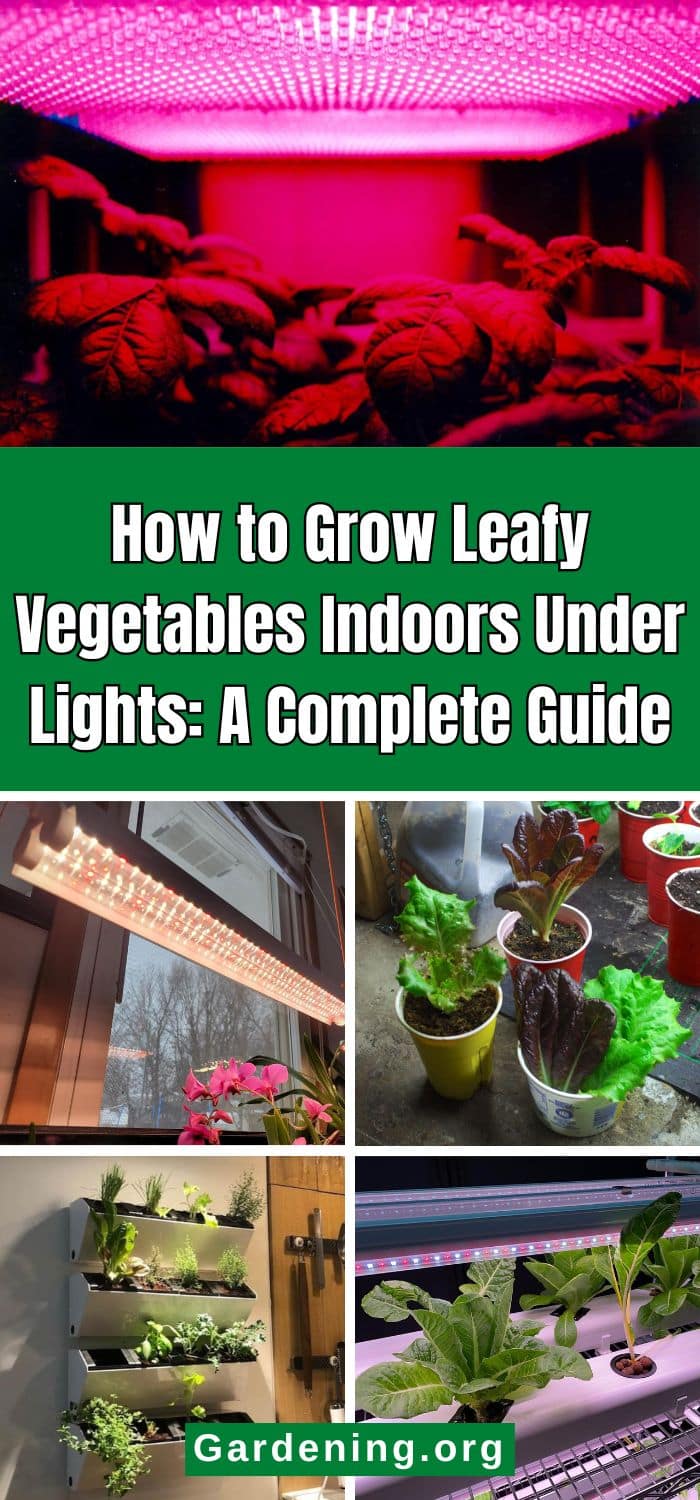
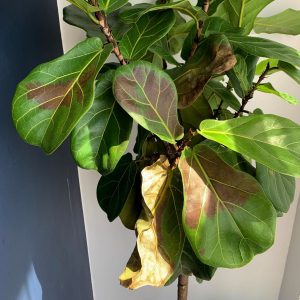
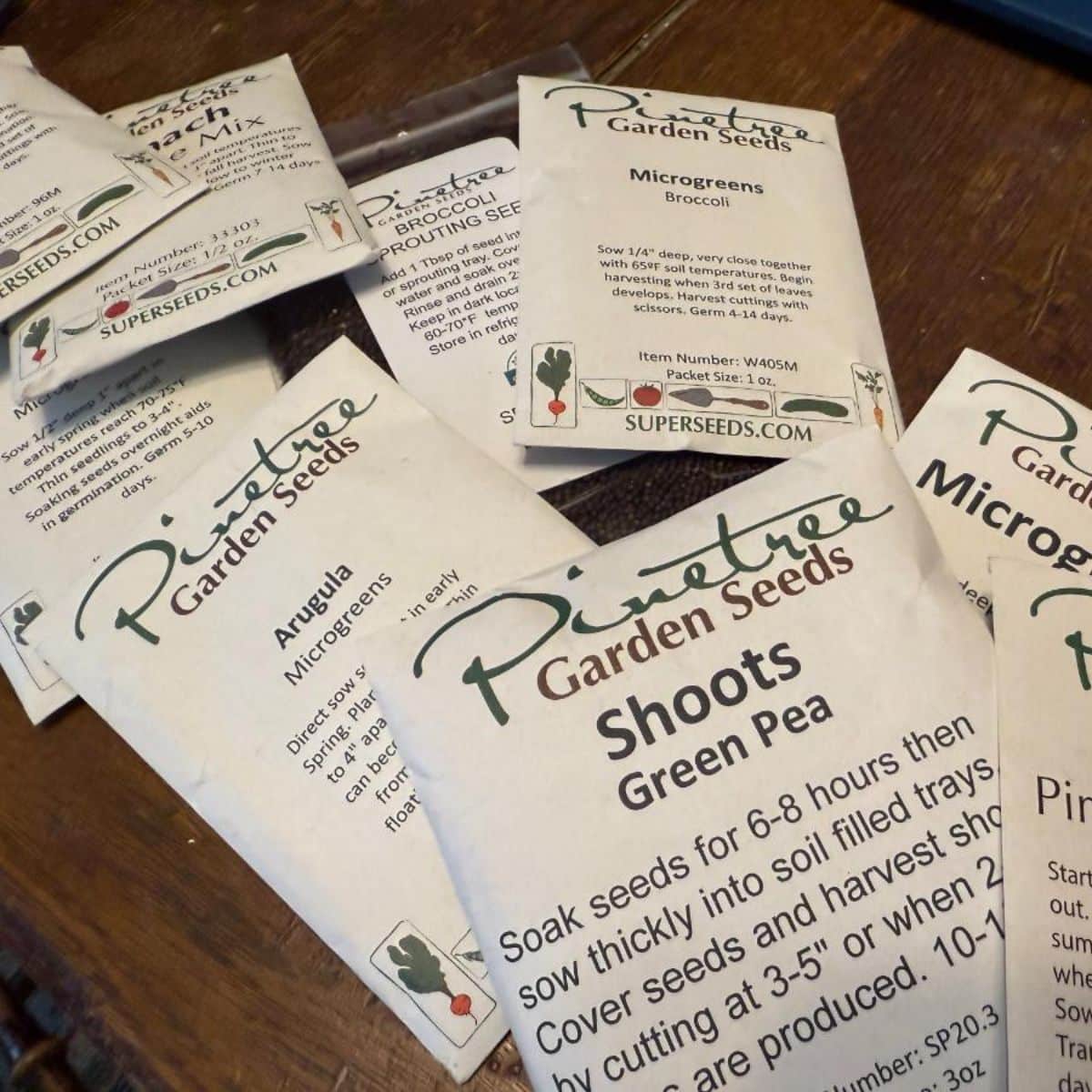

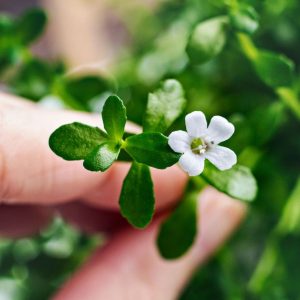
Leave a Reply